How to soothe eczema in babies and children

Atopic eczema in babies and children, also known as atopic dermatitis, is a common condition that generally appears before the age of 1. The cause? Dysfunction of the skin barrier, leading to xerosis and chronic inflammation. The skin is less well protected, more sensitive to its environment and reacts accordingly. Symptoms include xerosis, red plaques on the folds of the elbows and knees, cheeks, neck, eyelids and torso. And above all, severe itching that's difficult to tolerate. Following a few simple steps can help your child live better with eczema.
Our tips for soothing atopic skin
Cleanse
gently
Why?
So as not to damage skin that is already fragile and sensitive.
How?
- Use a cleansing product that is suitable for dry atopic skin to minimize the risk of allergic reactions (soap-free, physiological pH 5.5). This type of product has lipid-replenishing and anti-inflammatory action.
- Short showers or baths (no more than 5 minutes) and not too hot (35°c max), as heat reactivates inflammation.
- Rinse off the cleansing product thoroughly.
- Pat skin dry, without rubbing.
Apply
a topical corticosteroid prescribed by a doctor
Why?
To relieve skin inflammation and itching during flare-ups
How?
Apply the topical corticosteroid as soon as the eczema flare-up begins, directly on the lesions.
Nourish
skin daily
Why?
To reduce skin xerosis, soothe itching and space out peaks of irritation and severe dryness, while reducing redness
How?
- Apply an emollient cream that is suitable for atopic skin.
- Choose the texture according to the intensity of skin dryness, the time of application or the season: lotion, cream, balm or spray when you're in a hurry.
- Apply this emollient treatment 1-2 times a day, every day (even between flare-ups). Ideally after showering.
- Warm the product between your hands, then apply it gently in broad strokes, without rubbing, to skin that is still slightly damp.
Reduce
itching
Why?
While scratching provides immediate relief, it increases itching by reactivating red plaques and irritation, not to mention the risk of infection if hands or nails are dirty.
How?
- Opt for loose-fitting clothing to limit chafing.
- Avoid contact with potentially allergenic substances such as dust mites by using an anti-dust mite mattress cover and getting rid of carpets.
- Don't cover your child up too much at night, and keep room temperature between 18°C and 20°C.
- Cold is extremely soothing and acts as a form of anesthetic: keep emollient care products in the fridge for more intense soothing when you apply them, or place a bag of frozen peas on the itchy area.
- Keep their hands busy with a stress ball, for example, or, better still, with a scratch substitute such as a Velcro strip placed on an item of clothing, or on a cuddly toy for younger children.
- Keep them busy to distract their attention from the itching: a short relaxation or sports session, listening to their favorite music, or even a session with a relaxation therapist when flare-ups are frequent.
- Cut or file their fingernails, to avoid further damage to their skin, which is already fragile.
Relaxation
Our 5 anti-scratching tips for children
Here are 5 fun tips to keep kids entertained and relaxed when itching kicks in. These tips provide soothing at times of tension and aid the learning process.
Crouch down like a frog
See the frog crouching still at the edge of the pond? Ask your child to squat down, feet flat, without moving. "Keep your back straight, place your hands on the floor and close your eyes." Count to 5, then say "ribbit, ribbit" together, and do this again as many times as you need.
Why?
This posture allows your child to concentrate on the frog's position and forget about the itching. Repeating it is relaxing.
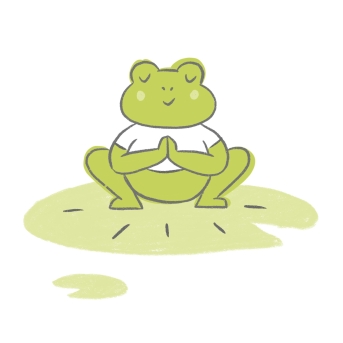
Managing emotions
Shake the calm jar!
Make a "calm jar" together: In a small glass jar (or bottle), mix hot water, liquid glue, small objects (buttons, seeds, etc.) and a few drops of dye. Close tightly and shake. When itching starts, ask your child to take the jar with both hands and shake it, saying "Hey! Scratchers, leave my skin alone!” Repeat the exercise as many times as the child needs.
Why?
By shaking the jar, your child lets off steam, then calms down by carefully observing the small objects as they gently sink to the bottom.
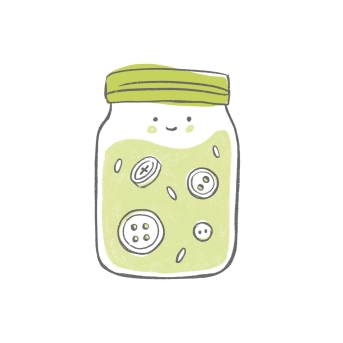
Concentration
On your magic carpet!
Lie on your back and position your child comfortably, tummy to tummy. Explain that they should inhale slowly at the same time as you do, then exhale slowly for as long as possible. Your child will feel their belly inflate and deflate at the same time as yours. You can accompany the exercise with a short story: "Imagine that our breathing will help the magic carpet to fly away and carry us high into the sky... .”
Why?
Through abdominal breathing, they focus on their breath and gradually relax.
An ideal exercise to restore inner calm during flare-ups, or just before going to sleep. And off we go for a trip to dreamland!
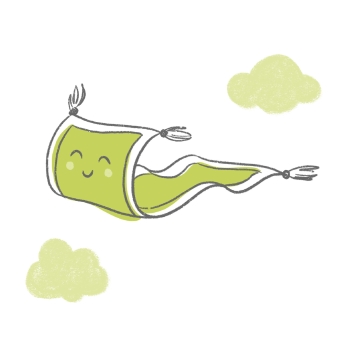
Fun application
Simon says!
Here's a new take on the well-known game! The idea is simple: ask your child to follow your instructions while applying a little cream to their chest, elbows... "Simon says: gently pat your elbows..." "Simon says: massage your chest in large circles..."
Why?
A fun, offbeat way to familiarize yourself and them with the daily application of cream, while learning the right habits for itchy skin. A little game to play over and over again, when itching is mild, moderate or severe, so that applying cream becomes a pleasure rather than a chore, and above all, a habit.
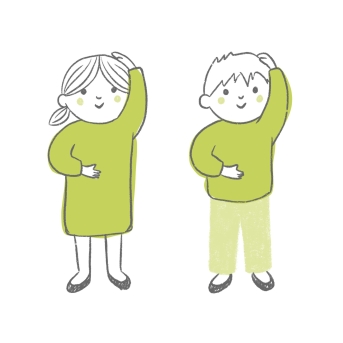
Fun application
What's the weather like on your body?
When itching starts, ask your child to place a finger on the itchy areas and use weather words to describe the itching: "Thunderstorms on the back / Lots of clouds on the elbows / Storm on the chest, etc.". At each stage, mimic the application technique appropriate for the area on your own body, and encourage your child to do the same on their body with the cream. As the application progresses, the weather calms down and the sun comes out!
Why?
This is a playful way to soothe the areas where scratching is most prevalent, and to familiarize your child with an essential routine: the daily application of cream.
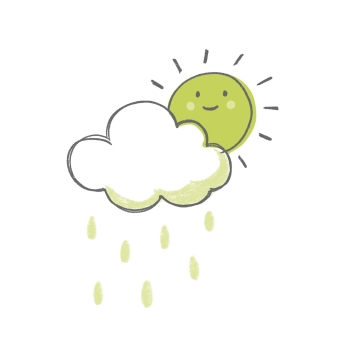
Related products

Interested in our tips sheets?
Discover those of our other brands.
Discover our medical tip sheets to help you provide precise recommendations to your patients. These comprehensive resources provide clear, concise information on a variety of dermatological conditions to help your patients in their daily lives.
Want to read on?
This access is reserved for professionals, registered on Pierre Fabre For Med.
To access the full content, please register or log in if you already have an account.